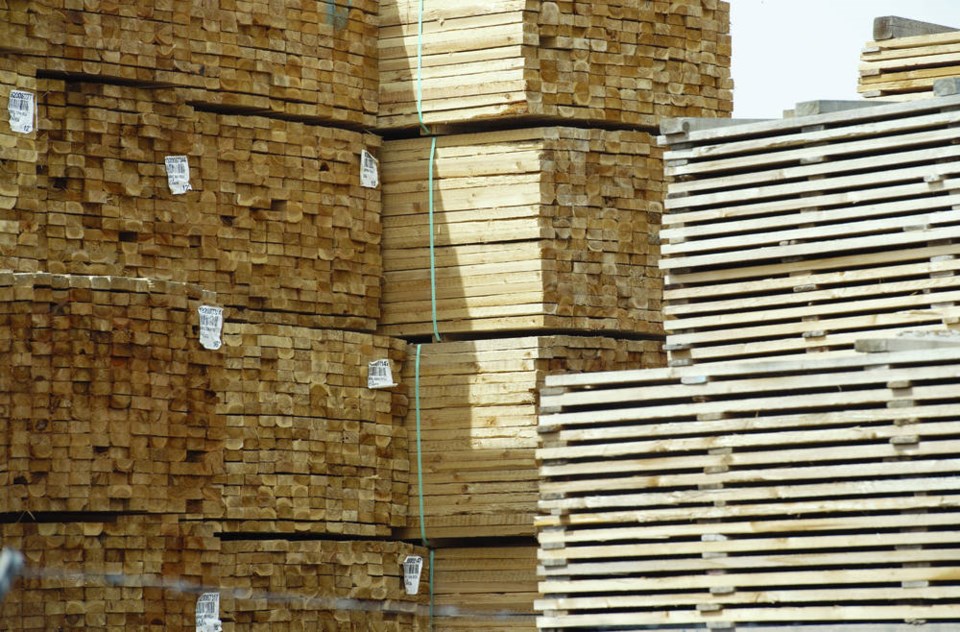VANCOUVER — The sticker shock of lumber prices that have more than tripled in the last year has renovation contractor Cameron Holden having to manage client expectations.
“[Customers] get a little overwhelmed when it comes to my traditional pricing sheet [which] has … $5 for a piece of lumber, now that piece of lumber is like $12,” said Holden, owner of Vancouver-based The Anything Pros. “So you’re juggling people’s emotions on their budget along with the supply of wood, if there is any in.”
That isn’t always guaranteed either. A combination of a boom in U.S. housing construction with a COVID-19-inspired explosion in home renovations that lumber producers still haven’t caught up with have pushed lumber prices to stratospheric highs, said Keta Kosman, publisher of the industry journal Madison’s Lumber Reporter.
Madison’s last week quoted a price of $1,330 US for 1,000 board feet of Western Spruce, pine or fir two-by-fours, a standard measure in the industry, which would have cost $336 US a year ago.
“For the past 15 years or whatever, lumber has not been sexy and now, suddenly, it’s a hot and really cool thing,” Kosman said. “An economist sent me lumber prices in Bitcoin, lumber prices in oil.”
That is an illustration that lumber prices still don’t look high, compared with other commodities, but it’s still “astonishing when the correction sort of seems to all happen at the same time,” Kosman said.
And it’s tough for contractors such as Holden to explain, he said, when the price of lumber to frame a small patio soars to $6,000 from the $3,800 initially quoted.
“So, the uncertainty of how much the price of lumber [changes] from one day to the next is so frustrating, because you have to communicate that with your clients,” Holden said.
Those wild price swings are magnified for homebuilders, said Ron Rapp, CEO of the Homebuilders Association Vancouver, and not just for two by fours.
“It pretty much goes across the board for dimensional lumber, like two-by-fours, two-by-sixes … as well as sheet goods such as [oriented-strand board] and plywood,” Rapp said.
For a typical 2,200-square-foot, three bedroom, two-storey home, those higher prices add “well over $30,000 to the lumber-package costs, over and above what it was at the beginning of 2020.”
How the skyrocketing prices affect the plans of builders depends on where they are in the cycle for their projects, Rapp said. Builders who haven’t pre-sold homes yet scramble to adjust prices to cover the cost. For those who are midway through construction on homes they’ve already sold, the rising prices squeeze their profit margins.
For the most part, Rapp said demand for housing and renovations has been so strong that higher lumber prices have “not yet become cost-prohibitive.”
U.S. housing starts, the primary driver of North American demand for lumber, by the end of 2019 showed signs of recovering from a prolonged downturn after the real estate crash of the mid 2000s, Kosman said.
American millennials, those born between 1981 and 1996, are the biggest group in the population that will drive housing demand in the coming decades, Kosman said, and they outnumber their baby-boomer parents.
“So there is like a 15-year window of increased housing demand, just from this generation,” Kosman said. “They don’t necessarily buy single-family homes,” preferring more urban-oriented housing forms.
“Five-storey [apartment buildings] don’t use as much wood as a single-family house, but [they] still use wood, so there’s no question that prices would go up anyway.”



